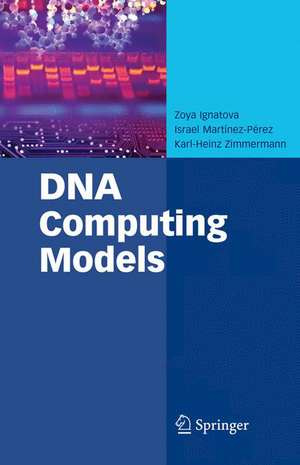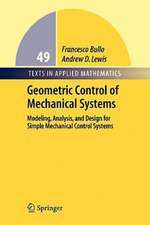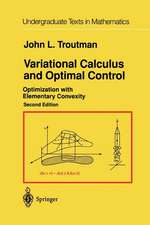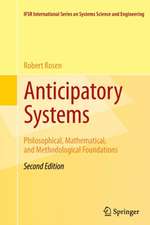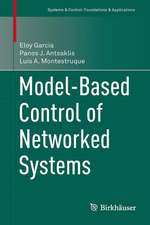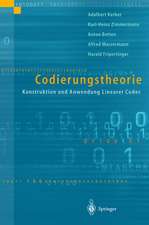DNA Computing Models
Autor Zoya Ignatova, Israel Martínez-Pérez, Karl-Heinz Zimmermannen Limba Engleză Hardback – iul 2008
| Toate formatele și edițiile | Preț | Express |
|---|---|---|
| Paperback (1) | 944.82 lei 6-8 săpt. | |
| Springer Us – 4 noi 2010 | 944.82 lei 6-8 săpt. | |
| Hardback (1) | 948.92 lei 6-8 săpt. | |
| Springer Us – iul 2008 | 948.92 lei 6-8 săpt. |
Preț: 948.92 lei
Preț vechi: 1157.22 lei
-18% Nou
Puncte Express: 1423
Preț estimativ în valută:
181.59€ • 188.51$ • 151.42£
181.59€ • 188.51$ • 151.42£
Carte tipărită la comandă
Livrare economică 22 martie-05 aprilie
Preluare comenzi: 021 569.72.76
Specificații
ISBN-13: 9780387736358
ISBN-10: 0387736352
Pagini: 288
Ilustrații: XIV, 288 p. 20 illus.
Dimensiuni: 155 x 235 x 20 mm
Greutate: 0.54 kg
Ediția:2008
Editura: Springer Us
Colecția Springer
Locul publicării:New York, NY, United States
ISBN-10: 0387736352
Pagini: 288
Ilustrații: XIV, 288 p. 20 illus.
Dimensiuni: 155 x 235 x 20 mm
Greutate: 0.54 kg
Ediția:2008
Editura: Springer Us
Colecția Springer
Locul publicării:New York, NY, United States
Public țintă
ResearchDescriere
Sir Francis Crick would undoubtedly be at the front of the line ordering this fascinating book. Being one of the discoverers of DNA, he would be amazed at how his work has been applied to mankind's most important invention, the computer. DNA contains the genetic instructions for the biological development of cellular life forms or viruses. DNA computing uses DNA as a substrate for storing information, while molecular biological operations are used to manipulate this information.
DNA Computing Models begins with a comprehensive introduction to the field of DNA computing. This book emphasizes computational methods to tackle central problems of DNA computing, such as controlling living cells, building patterns, and generating nanomachines. DNA Computing Models presents laboratory-scale human-operated models of computation, including a description of the first experiment of DNA computation conducted by Adleman in 1994. It provides molecular-scale autonomous models of computation and addresses the design of computational devices working in living cells. It also addresses the important problem of proper word design for DNA computing.
DNA Computing Models is designed for researchers and advanced-level students in computers science, bioengineering and molecular biology as a reference or secondary text book. This book is also suitable for practitioners in industry.
DNA Computing Models begins with a comprehensive introduction to the field of DNA computing. This book emphasizes computational methods to tackle central problems of DNA computing, such as controlling living cells, building patterns, and generating nanomachines. DNA Computing Models presents laboratory-scale human-operated models of computation, including a description of the first experiment of DNA computation conducted by Adleman in 1994. It provides molecular-scale autonomous models of computation and addresses the design of computational devices working in living cells. It also addresses the important problem of proper word design for DNA computing.
DNA Computing Models is designed for researchers and advanced-level students in computers science, bioengineering and molecular biology as a reference or secondary text book. This book is also suitable for practitioners in industry.
Cuprins
Theoretical Computer Science.- Molecular Biology.- Word Design for DNA Computing.- Non-Autonomous DNA Models.- Autonomous DNA Models.- Cellular DNA Computing.
Recenzii
From the reviews:
"The book is very timely and will likely open up this emerging research area to many current and future researchers. Especially for people on the theoretical computer science side of things, DNA computing has the potential to provide many challenging and exciting new problems. … this book appears to be a collection of survey papers on the topic of DNA computing." (Burkhard Englert, ACM Computing Reviews, November, 2008)
"The book is very timely and will likely open up this emerging research area to many current and future researchers. Especially for people on the theoretical computer science side of things, DNA computing has the potential to provide many challenging and exciting new problems. … this book appears to be a collection of survey papers on the topic of DNA computing." (Burkhard Englert, ACM Computing Reviews, November, 2008)
Textul de pe ultima copertă
Sir Francis Crick would undoubtedly be at the front of the line ordering this fascinating book. Being one of the discoverers of DNA, he would be amazed at how his work has been applied to mankind's most important invention, the computer. DNA contains the genetic instructions for the biological development of cellular life forms or viruses. DNA computing uses DNA as a substrate for storing information, while molecular biological operations are used to manipulate this information.
DNA Computing Models begins with a comprehensive introduction to the field of DNA computing. This book emphasizes computational methods to tackle central problems of DNA computing, such as controlling living cells, building patterns, and generating nanomachines. DNA Computing Models presents laboratory-scale human-operated models of computation, including a description of the first experiment of DNA computation conducted by Adleman in 1994. It provides molecular-scale autonomous models of computation and addresses the design of computational devices working in living cells. It also addresses the important problem of proper word design for DNA computing.
DNA Computing Models is designed for researchers and advanced-level students in computers science, bioengineering and molecular biology as a reference or secondary text book. This book is also suitable for practitioners in industry.
DNA Computing Models begins with a comprehensive introduction to the field of DNA computing. This book emphasizes computational methods to tackle central problems of DNA computing, such as controlling living cells, building patterns, and generating nanomachines. DNA Computing Models presents laboratory-scale human-operated models of computation, including a description of the first experiment of DNA computation conducted by Adleman in 1994. It provides molecular-scale autonomous models of computation and addresses the design of computational devices working in living cells. It also addresses the important problem of proper word design for DNA computing.
DNA Computing Models is designed for researchers and advanced-level students in computers science, bioengineering and molecular biology as a reference or secondary text book. This book is also suitable for practitioners in industry.
Caracteristici
Includes laboratory-scale human-operated models of computation; includes the first experiment of DNA computation conducted by Adleman (1994), models to solve complex computational problems, and computationally universal models of DNA computing
Addresses the design of complex genetic circuits by using cellular logical circuits
Addresses the design of complex genetic circuits by using cellular logical circuits
